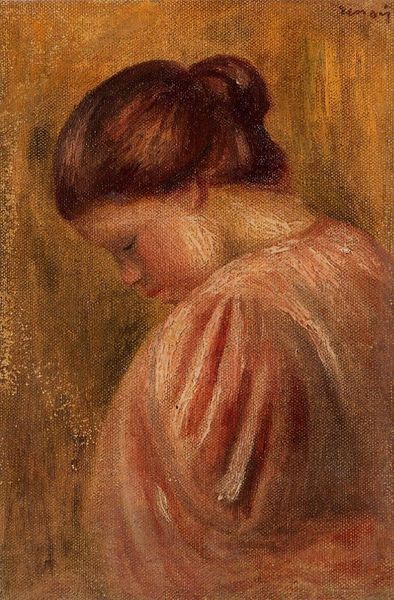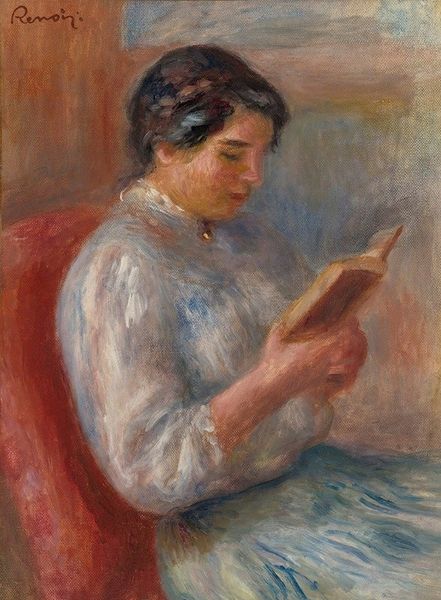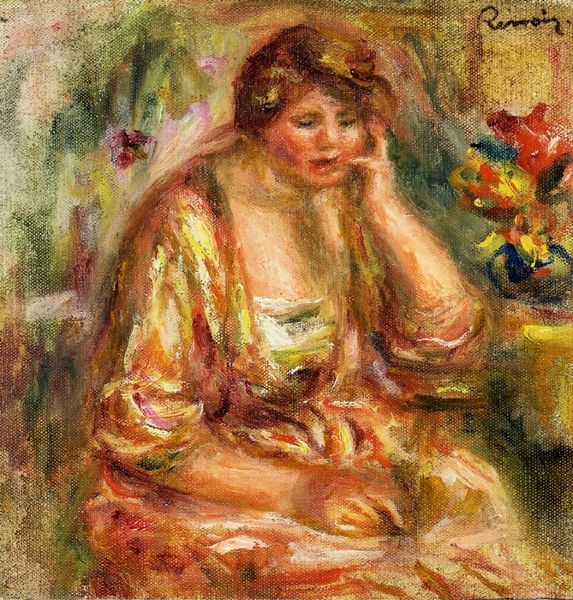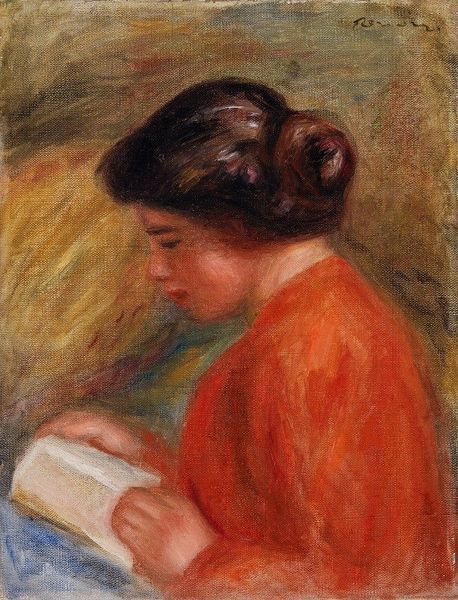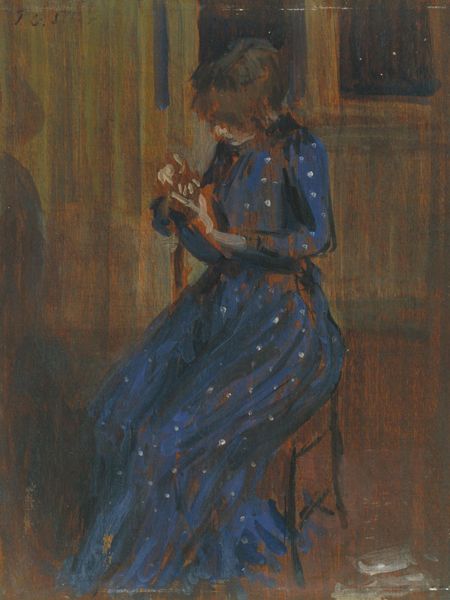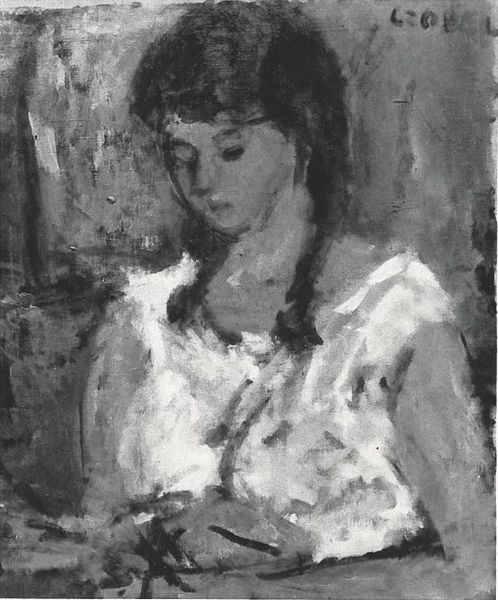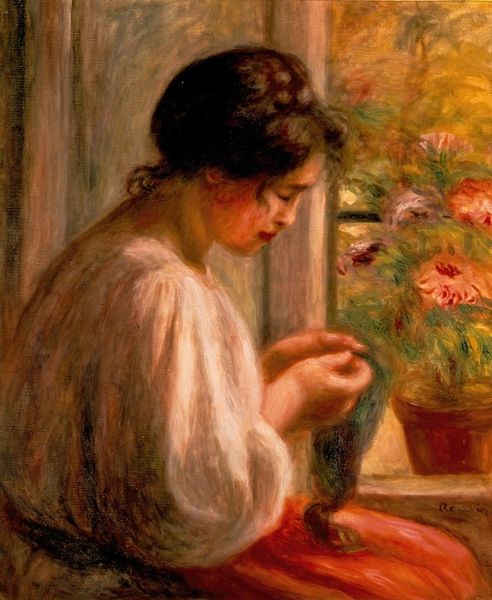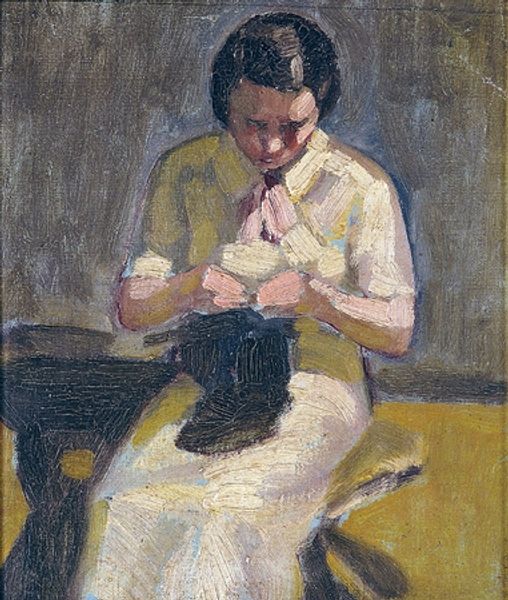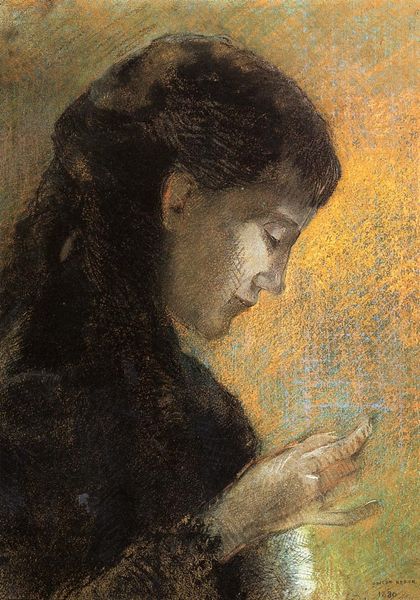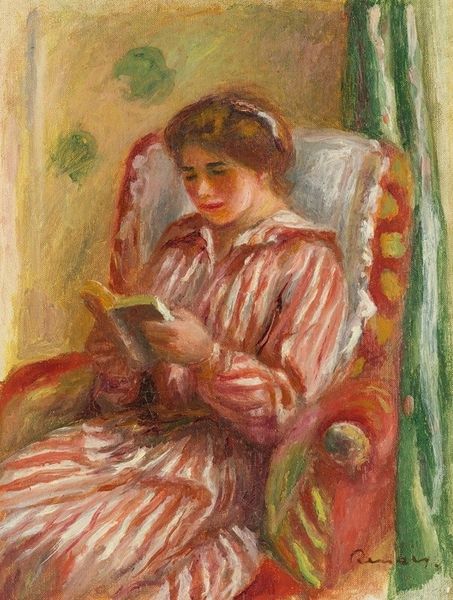
Copyright: Public Domain: Artvee
Editor: Here we have Renoir's "Girl Darning," circa 1909, created using oil paint. I'm struck by how the artist uses color, especially the predominance of reds and oranges. What stands out to you? Curator: Notice how the application of paint is not used to produce a perfect representation but to create texture. What relation does this gestural freedom bear to the history of portraiture before the impressionists? Editor: Are you referring to the blurred edges and visible brushstrokes instead of clear lines and smooth surfaces? I guess it feels like he prioritized capturing a fleeting moment, the essence of the girl's action, rather than perfect anatomical precision. Curator: Precisely. See how the lines converge and diverge. Are they suggestive of visual harmony or discord? Is Renoir inviting you to view darning or more, the texture, light, shadow of its depiction? Editor: I can see both harmony and a slight dissonance. It's like the warmth of the colors tries to unify the composition. The pose, though, is somewhat awkward, as if caught mid-movement. Maybe that contrast reflects the reality of everyday life. It isn't always picturesque. Curator: Yes. Is the girl darning then the subject of this work or, instead, a device used to investigate light, shadow, color, and perspective? How does it advance the purely visual project? Editor: It is true; thinking of this as an exercise in portraying light, color, texture suddenly renders the narrative aspect less relevant. Curator: So perhaps form, line and color serve to advance and exceed representation itself. What did you glean about Renoir’s methods today? Editor: Well, it made me appreciate how his paintings push beyond simply depicting a subject, toward this interesting visual exploration. Thanks for your thoughts!
Comments
No comments
Be the first to comment and join the conversation on the ultimate creative platform.


